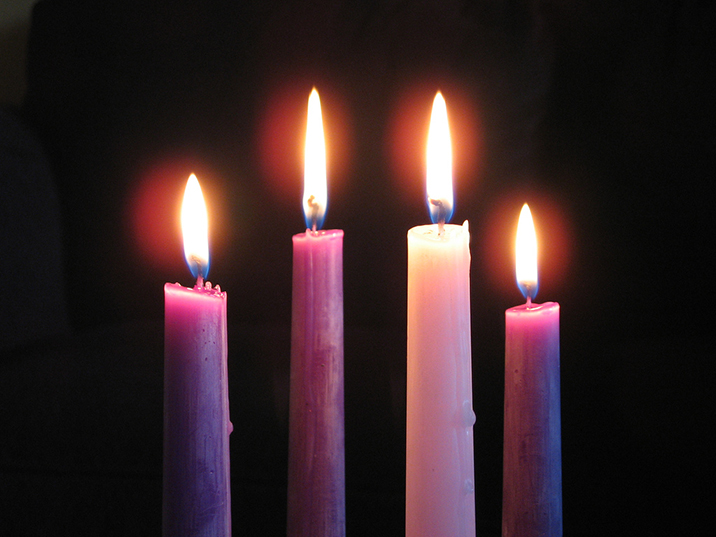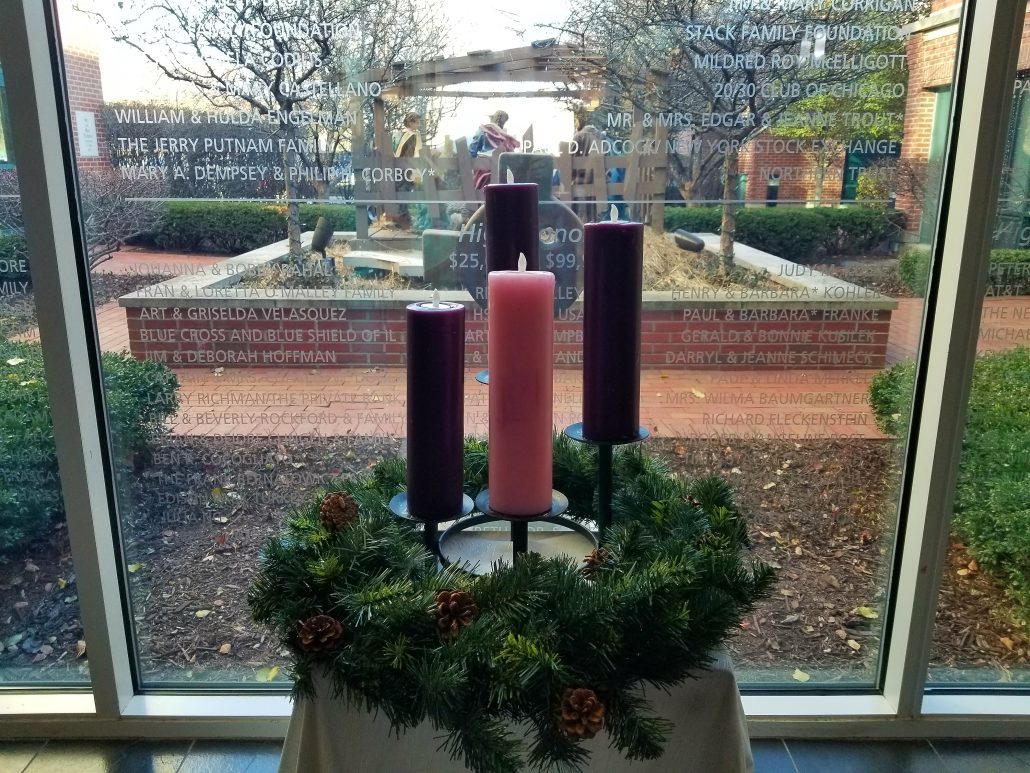While berries, flowers, and lush greenery certainly have a certain aesthetic appeal and are often used throughout the holidays, they also have a rich history of significance and yet most people are not unaware of it. What is the origin of Christmas wreath?
Wreaths are decorative arrangement that can be found in houses all year long, but for many, they are seasonal accents, and Christmas is the occasion with which they are most frequently associated. Christmas wreaths can be created from virtually anything, although they are most frequently crafted from seasonal flowers and fresh foliage.
During this time of year, they are typically hung on a wall or front door or laid flat on a surface to be used as an Advent wreath. Many people are ignorant of the lengthy history and varied meanings attached to them, despite the fact that they have evolved into holiday traditions both in the United States and elsewhere in the world.
Origins of The Christmas Wreath
A wreath is an ornamental item constructed of leaves, flowers, and occasionally fruits. It may be utilized as a decorative item, a door or wall hanging, or a lovely dinner table centerpiece. An everyday ornament during the holy season of Christmas is a wreath. Christmas wreath history is quite fascinating and has a variety of origins. According to a well-known hypothesis, it is related to the culture of ancient Persia. In that time period, Christmas wreaths were seen as a sign of prominence and achievement. Since they were smaller and were referred to as “diadems,” people frequently wore them as headbands.
Wreaths have historically been utilized on a variety of significant events and have always been regarded as essential. These wreaths, which were often handcrafted, represented triumph and pride. Significant evidence suggests that wreaths were often utilized at weddings. These laurel wreaths were initially worn as a crown for Olympic winners by the Greeks in 776 B.C. King and military heroes wore wreaths in ancient Rome, and females adorned themselves with them and diamonds.
In Christianity, wreaths have a unique significance. The Bible associates wreaths with triumph, pleasure, and praise. A wreath represents God’s eternity in Christianity since it is a circular and has no beginning or finish. Evergreen leaves and branches, which are used to make Christmas wreaths, stand in for God’s mercy and love for Christians. The leaves’ green hue stands for fresh life and optimism. Christmas wreaths are often composed of five candles, the fifth of which is placed in the center of a circle formed of evergreen leaves.
During Christmas, these four or five candles are utilized for devotional purposes and are wrapped in the wreath. These Christmas wreaths not only enhance the decorations’ attractiveness but also provide houses a unique atmosphere. Since they represent life during the winter, they play a significant role in the Christmas celebrations. There are countless varieties of Christmas wreaths on the market right now. Depending on one’s interests and inclinations, one can select a fresh, fake, or lit Christmas wreath.
Anatomy and Origin
The name “wreath” derives from the Old English verb “writhan,” which means “to twist,” and throughout history, wreaths have been linked to several civilizations. Wreaths are said to have originated in the Persian Empire, ancient Egypt, and ancient Greece, although their use then was different from what it is today. Wreaths known as diadems were worn as a headpiece as a symbol of power or authority throughout the Persian Empire. They were cloth-based, jewel-encrusted, and frequently worn by royalty.
Although they called it a chaplet, the ancient Egyptians also wore a similar style of wreath as a headpiece. Laurel wreaths served as a sign of honor in Greece and Rome, where emperors wore them and gave them to soldiers and others. Romans often presented wreaths made of olive leaves and laurel to champion athletes and even writers. Also believed to be symbols of victory were wreaths that were hung on doors.
Christmas Wreaths
The pagan holiday of Yule, which commemorates the winter solstice and was observed by ancient Germanic and Scandinavian peoples, is also linked to Christmas wreaths. This 12-day celebration, also known as midwinter, was held to celebrate the return of the sun and the changing of the seasons. Wreaths were utilized during Yule to represent the natural world and the coming of spring. In anticipation of the warmth and sunlight returning, they clutched lit candles in their hands.
Rome also observed a midwinter festival known as Saturnalia from December 17 through December 23, during which time they celebrated Saturn, the god of agriculture or sowing. Romans decorated with holly wreaths at Saturnalia and also offered them as presents.
Wreaths are still used by various religions today for reasons unrelated to Christmas. Muslims commemorate the holy month of Ramadan, for instance, during which time a three-day celebration known as Eid al-Fitr marks the completion of the month’s fasting. During this season, door wreaths are frequently on display.
The use of wreaths in conjunction with Christmas and Christianity, however, may be the most common and well-known, as its circular shape is thought to represent eternal life and God’s unending love. Christians began using wreaths around Yule in the 16th century, and this practice eventually evolved into the Advent wreath. Evergreens, which represent eternal life and were originally used to make these wreaths, along with holly oak and red berries. The holly oak’s red berries and prickly leaves stood in for Jesus’ crown of thorns and the bloody drips they spurted.
The four candles on the Advent wreath should be three purple and one pink. The prophecy candle, which is a purple candle that is lit first during Advent, is believed to represent hope. Another purple candle, known as the Bethlehem candle, is lit on the second Sunday of Advent. To some, it represents love, while to others, it represents Jesus’ cradle. On the third Sunday of Advent, the pink candle, known as the shepherd candle, is lit to symbolize gladness.
The angel candle, which is the last purple candle and is lit on the fourth Sunday of Advent, stands for peace. In some cases, the wreath’s center will receive a fifth white candle. This is lit on Christmas Eve and is known as the Christ candle. These candles stand for the arrival of Christ’s light.
Your wreath might have symbolic value by using herbs:
- Rosemary to honor memory
- Thyme for courage
- Sage for excellent health
- Purity with lavender
- Ruin over virtue
- Juniper for rebirth and optimism
- Hawthorn berries for happiness and safety
- Pine cones for longevity and wealth
- Cedar for strength, and holly for immortality.
Wreaths as An Emblem
Laurel wreaths were used in Ancient Greece to symbolize the cycle of endless life and were placed on display during funerals. The laurel wreath had significance in the prevailing paganism of the time. To demonstrate the might and power of their gods, artists frequently sculpted wreath-like motifs onto their skulls. While the wreath initially gained notoriety as a representation of strength, victory, and honor in antiquity, it soon started to be utilized for other occasions and holidays as well. Throughout Christianity’s ascent to power in Europe, the connection between wreaths and immortality, toughness, and strength persisted. When the earliest Christians started to build wreaths out of evergreen boughs, a lot of the symbolism was carried over.
The Advent Wreath’s Five Candles
Typically, an Advent wreath has five candles in all. These three candles, which are typically purple, represent the three pillars of Christianity: peace, hope, and love. The purple and scarlet candles in the wreath are lit to represent the blood that Christ shed while He was being crucified on the cross. The white candle in the middle of the wreath represents the purity of Christ’s virgin birth and incarnation. The combined light of the five candles symbolizes the gospel of Christ’s entry into the world on Christmas.
Harvest Wreaths
Some individuals decked their front doorways with harvest wreaths from the previous year, similar to Yule celebrations. It served as a metaphor for getting the harvest ready for the severe winter and for blessing their crops. The circular form served as a reminder that the seasons will continue to change. Herbal wreaths were also displayed on some people’s doors. They thought that by hanging healing herbs on their doors, they could ward off disease and evil.
Celebration of Yule
Although Christmas wreaths are the most common, pagan rites also made use of wreaths. Evergreen wreaths were used to commemorate Yule’s winter solstice in ancient Germany and several Scandinavian nations. Yule is a twelve-day celebration of the sun’s reemergence and the changing of the seasons. The wreaths’ greenery and organic components symbolized nature and the promise of fresh beginnings that spring brought. To celebrate the warmth and sunlight of the new season, some people also burned candles on their wreaths. Yule can now be used interchangeably with Christmas.
Funeral Wreaths
At funerals, flowers have always been a tradition. It was (and still is) also typical to have funeral wreaths as a sign of eternal life. For instance, a funeral wreath of white flowers was carried by another woman to symbolize the purity of the deceased when a young maiden passed away. Christians have traditionally placed wreaths at martyrs’ funerals to symbolize Christ’s triumph over death.
For the burial of a sailor or in remembrance of those who have perished at sea, some people still adhere to the custom of floating wreaths on the water. Wreaths are occasionally carved onto gravestones and are frequently used for war memorials. Wreaths continue to serve as a symbol of bravery and power long after death, just like in classical Greece.
Christmas Wreath Symbolism and Meaning
Each element of the Christmas wreath has a seasonal significance.
The Circle
The shape of a traditional wreath is a circle. For both Christians and non-Christians, this circle can mean many different things:
God’s unending presence, which has no beginning or end
The seasonal cycle, which goes from spring through winter and then back to spring
the expectation of life’s rebirth
the promise of eternal life through the Savior, Christ
God’s unwavering love
Components of the Wreath
Early wreaths were constructed from a variety of evergreen materials. In general, evergreens stand for continuity and perseverance through adversity. However, each evergreen utilized also has a meaning:
- Holly is a representation of Christ’s crown of thorns from the Crucifixion.
- Yew, holly, and pine are emblems of perpetual life.
- Cedar symbolizes recovery.
- The laurel leaf stands for victory over pain and suffering.
- Nuts, seeds, and pine cones are symbols of birth and rebirth.
Colors
Red and green, the traditional Christmas hues, also have symbolic significance. Green is a symbol of growth and life. It represents the soul’s eternal life to Christians. Christ’s blood on the cross is symbolized by the color red.
Candles
The candles also have a unique meaning of their own. One candle is lit every Sunday to symbolize each of the four weeks of Advent. Because the color violet is a liturgical one that denotes a time of prayer, penance, and sacrifice, three of the candles are purple.
Hope is represented by the first candle, which is purple. In honor of the prophets, particularly Isaiah, who prophesied the birth of Christ, it is occasionally referred to as the “Prophecy Candle.” It symbolizes the eagerness felt in anticipation of the Messiah’s arrival.
The second candle, which is purple as well, stands for faith. Because it serves as a reminder of Mary and Joseph’s journey to Bethlehem, it is known as the “Bethlehem Candle.”
Gaudete Sunday, which falls on the third Sunday of Advent, is intended to serve as a reminder of the joy that the world felt upon the birth of Jesus as well as the delight that the faithful have arrived at the midway of Advent.
We burn the last purple candle during the fourth week of Advent to symbolize the last week of fasting and prayer before the birth of our Savior. The “Angel’s Candle,” the last candle, stands for peace. It makes us think of the angels’ proclamation of “Peace on Earth, Good Will Toward Men.”
Even though the Advent wreath at Mercy Home does not have a white candle, modern-day variations of this custom have gained popularity.
On Christmas Eve, the white candle is set in the center of the wreath and lit. The “Christ Candle” is a candle that symbolizes Christ’s life. Because Christ is our sinless, sinless Savior, the color white stands for purity.
An Advent wreath is used by many families as part of their celebration. Typically, an evergreen circle, three purple candles, one rose candle, and one white candle make up an advent wreath (center of wreath). Some folks choose to use only four candles instead of the white candle. The white flame symbolizes the birth of Christ, while the purple and pink candles represent the four weeks leading up to Christmas, known as Advent. Usually, a Bible verse is read, and then a brief prayer.
Leaves and Fruits
Its leaves and fruits are intertwined to form a wreath that represents the strength of life. A wreath is always made with evergreen leaves that can survive cold and freezing temperatures. This represents the courage and strength that humanity need build in order to face all of life’s difficulties. The wreath’s shape also represents the crown of thorns placed on Jesus’ head, the resurrection, and eternal life. Berries and other fruits represent wealth and success.
Door wreath
The practice of hanging a wreath on the front door dates back many centuries. For instance, as a sign of their love, the Ancient Greeks would place a wreath on their lover’s door. The Windsor Garden Club claims that placing a wreath on your front door has long traditions throughout Europe. Harvest wreaths were popular and revered as religious emblems of procrastination for the long, cold winter.
Evergreens
Christmas wreaths have historically been made from evergreens. There are two explanations for this. First, since other foliage has withered away during the winter, evergreens continue to look their finest, making them the natural choice. Additionally, evergreens symbolize the continuity of life and nature from a symbolic perspective. They serve as a reminder that spring and new growth are approaching. In order to symbolise fertility, berries were put to the wreaths.
Religious Symbolism
Another aspect of the history of wreaths is their connection to Christianity. According to legend, the white berries on the holly branches that Jesus was wearing became crimson. The wreath was adorned with four candles and served as a representation of Jesus. One candle would go in the center and three would go around the wreath. The center candle would be lit on Christmas Eve to symbolize the coming of Jesus Christ, the Light of the World. The wreath’s round form, which has no start or finish, also represented perpetual life. Wreaths frequently used the hues red, green, white, or purple to signify the sacrifice, joy, blood, life, blood, and forgiveness of Jesus.
Why a Wreath?
Advent wreaths’ components have special meanings of their own. For the crown of thorns that was placed on Jesus’ head at the crucifixion, holly berries and holly leaves are utilized as symbols.
Even the wreath’s circular design played a part in this pillar of Christmas customs. The donut-shaped ornament was not only simple to hang from the tree’s branches, but it also had a deeper spiritual significance. Following the second coming of Christ, the circle, which is an endless shape, stood for heavenly perfection and eternity. It brought with it the expectation of life after death in God’s presence. The advent wreath served as a daily reminder of God’s eternal love for his creation, demonstrated in the death of His Son.
Final Reflections
Much more than just accent items for the holidays, wreaths have many other purposes. We use wreaths in a variety of ways, and each one has a history, just like other traditions. Wreaths first appeared as a representation of strength and glory, and their use and significance have only grown over time. They are used to prepare for and decorate for the harvest, to worship Christ during Advent, and even to represent bravery during funerals. While a wreath’s artistic embellishments and vibrant greenery make it a lovely accent piece, we shouldn’t overlook the fact that each wreath has its own significance and narrative.



